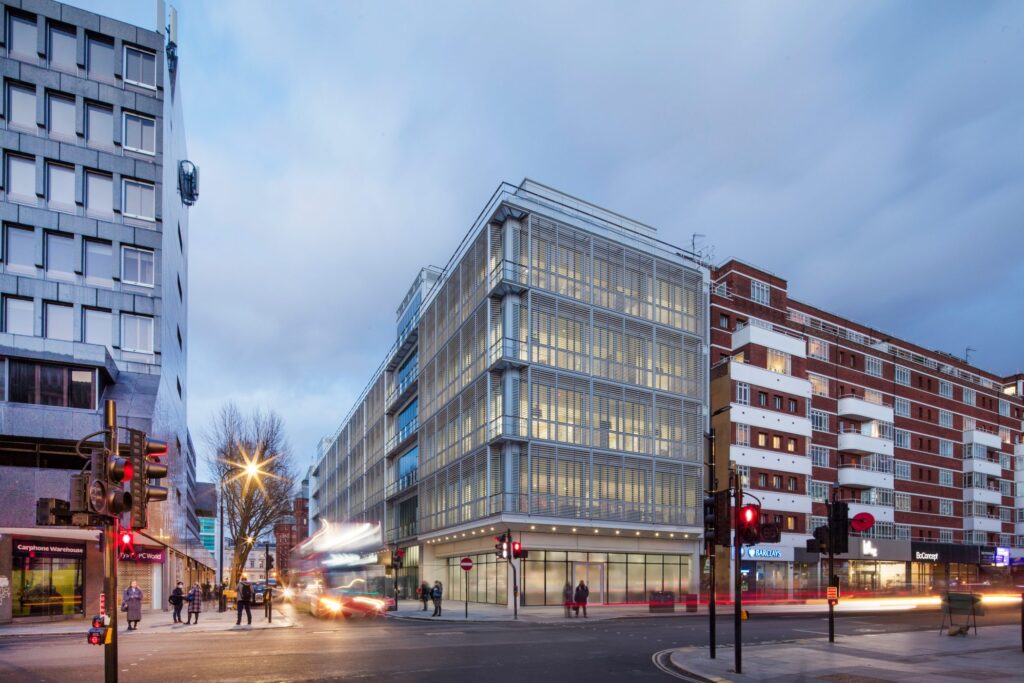People Spotlight: Meet Richard Tunstall
Our People Spotlight series gives you an inside look at our technical experts around the world. This week, we are highlighting a project manager from our Buildings + Places business in the United Kingdom and providing you insight into their project management experience within the healthcare and science end markets.
Richard Tunstall is a director overseeing a team of over 200 project and cost managers, delivering services from northern England down to the outskirts of London, focusing predominantly on health, science and tertiary education. Over the course of his career at AECOM, he has led several high-profile healthcare and science projects including the Guys Cancer Centre, UCLH’s Proton Beam Therapy Centre and Moorfields Eye Hospital’s Oriel Project.
Tell us about what inspired you to join the industry.
Ironically, I had no real idea what I was getting into when I joined the industry. I changed careers in my mid-twenties and took a job as a trainee working on what the company believed to be a programme of environmental projects, which aligned with my educational background in Environmental Sciences.
Working in project management has meant that no two days are the same, which I love. It also gives me the opportunity to interact with a wide variety of stakeholder groups, from the public and clients, to patients and healthcare workers, alongside internationally recognised experts in the industry.”
As it turned out, the “environmental” reports were actually project scoping reports for building refurbishments and IT hub room upgrades, which set out the performance or “environmental” requirements. Fortunately, my degree gave me a foundation in tracking information, data and version control, so I suppose it indirectly gave me a head start in project management!
Working in project management has meant that no two days are the same, which I love. It also gives me the opportunity to interact with a wide variety of stakeholder groups, from the public and clients, to patients and healthcare workers, alongside internationally recognised experts in the industry.
What is your favorite AECOM project that you’ve worked on and why?
That’s a tricky question. I’ve been incredibly fortunate to work on several unique and transformational projects in the fields of healthcare and science.
If I were to choose my two favourites, I’d first choose the AQML (Advanced Quantum Metrology Laboratory) for The National Physical Laboratory in London. Not only is the name impressive, but as a team, we had the opportunity to work with world-leading physicists, including a Nobel Prize winner, to deliver a research facility that has set new standards for what was considered achievable at the time in terms of vibration isolation, temperature and humidity control, and electromagnetic isolation.
A big challenge around this project was isolating the building from infrasound (super low frequency sound). The building is within the flight path of Heathrow airport and therefore the flights can impact the sound and experiments conducted. So, we had to create an isolation slab to help deliver a level of performance that was never before achieved in the UK.
The resulting facility is being used to house, amongst other things, a caesium fountain atomic clock, which is so accurate it only loses 1 second every 158 million years!
This facility has enabled the NHS to provide world-class cancer treatment to children and adults with highly complex tumours. These patients historically would have been sent abroad for treatment at great expense, limiting the number of people who could ultimately benefit from this type of treatment.”
My other favourite has to be the Proton Therapy Facility for University College London Hospital Trust. Everything about the project was big, complex and had never been done before. The project required the three proton therapy machines, each three stories high, to be driven through central London and then be installed into a basement large enough to accommodate the Royal Albert Hall entirely using the largest mobile crane in the UK. The basement has five-metre-thick concrete walls and doors weighing 90 tonnes each.
This facility has enabled the NHS to provide world-class cancer treatment to children and adults with highly complex tumours. These patients historically would have been sent abroad for treatment at great expense, limiting the number of people who could ultimately benefit from this type of treatment.
Tell us a story of how your work positively impacted the community.
I think I’m lucky in that the projects I’ve worked on, when complete, allow the NHS to provide lifesaving treatment to people of all ages with critical illnesses. I don’t think there can be a more incredible feeling than walking past a project you’ve played a part in delivering, knowing that every day, the lives of patients and their families are being improved.
Guy’s Cancer Centre is a great example where a new facility has helped to revolutionise cancer treatment, care and research. It comprises Europe’s first above‑ground radiotherapy facilities and an Innovation Hub, combining research and treatment together to help treat some of our country’s sickest patients.
Share a piece of career advice.
The one thing I’ve learned is don’t be afraid to ask questions. You’d be amazed by how many people attend meetings not knowing what is being said or explained!
At the Pirbright Institute, we were project managers for the delivery of CL4 and CL2 laboratories, which focused on research into emerging animal diseases, including zoonotic diseases. What truly helped us deliver quality work was being curious and getting a full understanding of how containment and ventilation systems worked to ensure that disease or viruses were fully contained.
The learning you take away from asking questions will undoubtedly come around again in future projects, as it did with the Pirbright Institute which transferred well into healthcare, especially when looking at critical care and immunocompromised patients (e.g. cancer care).

Advanced Quantum Metrology Laboratory, National Physics Laboratory, Teddington, London, UK. 
UCLH Proton Beam Therapy 
UCLH Proton Beam Therapy Centre, London






